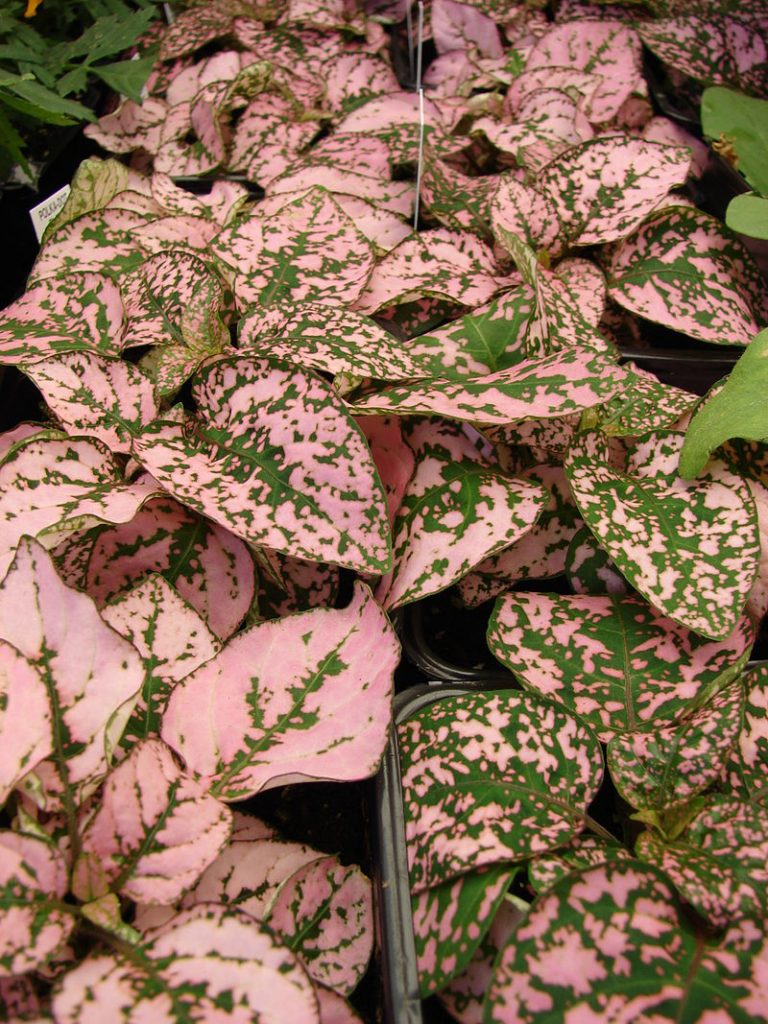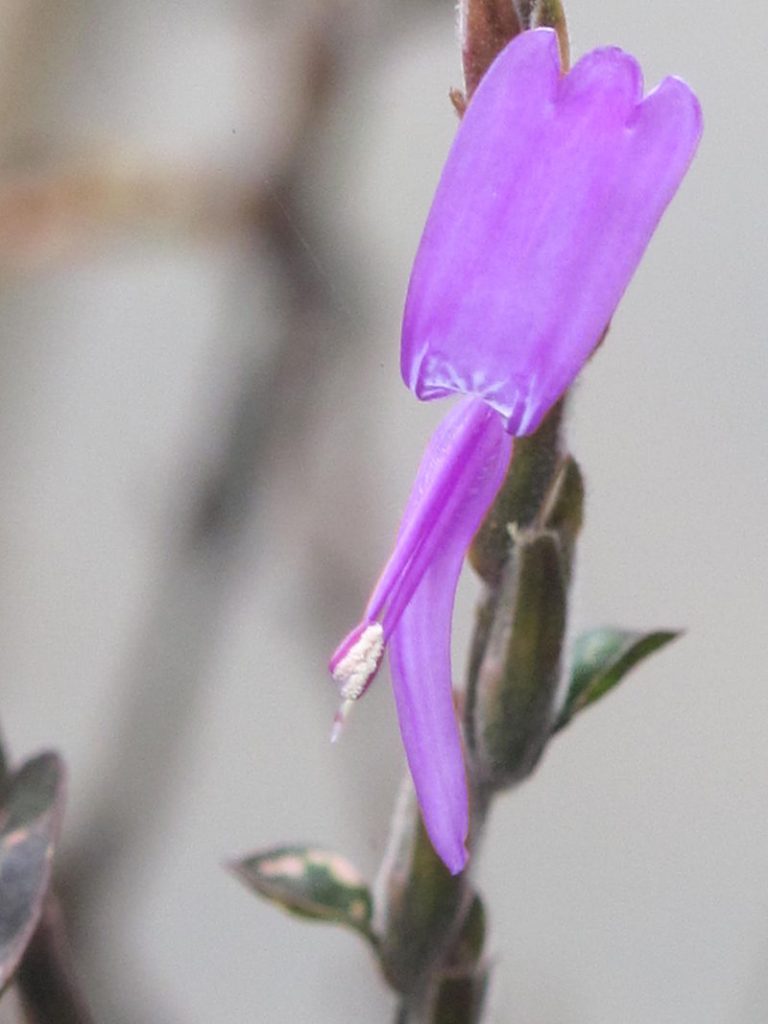
Native to the tropics of Madagascar, this tender herbaceous perennial or evergreen subshrub is a member of the acanthus family, Acanthaceaea, that also includes bear’s breeches, shrimp plant, and Thunbergia. Plants grow 1-2′ tall and have 2″ long, oval leaves that are green with purple-pink or white spots. Sporadically throughout the summer terminal, 6″ long spike-like racemes appear bearing small pink, blue or lavender flowers. The spikes are not considered ornamental and some gardeners remove them so as not to detract from the foliage. Although considered a houseplant in the past, polka dot plant is increasingly used in borders and containers. The genus name, Hypoestes, comes from the Greek words hypo, meaning under, and estia, meaning house, and refers to the fact that the calyxes are covered by bracts. The specific epithet, phyllostachya comes from the Greek words φύλλον (phúllon ) meaning leaf, and στάχυς (stákhus) meaning ear of grain, referring to the spike like inflorescence. Photo Credit Forest & Kim Starr Wikipedia

Type: Tender herbaceous perennial or evergreen subshrub often grown as an annual or houseplant
Bloom: Terminal, 6″ long spike-like racemes of small, tubular pink, blue or lavender flowers sporadically all summer
Size: 1-2′ H x 8-12″ W
Light: Partial sun
Soil: Fertile, consistently moist, well-drained; likes high humidity
Hardiness: Zones 10-11
Care: Pinch tips to promote bushiness
Pests and Diseases: Powdery mildew, root rot; aphids, white flies, mealy bugs when grown inside
Propagation:Seed
Companion Plants: Impatients, caladium, New Guinea impatients
Outstanding Selections:
‘Confetti Blush’ (white veined olive green leaves)
‘Hippo’ (dark green and red leaves)
‘Pink Splash’ (green and pale pink leaves)
‘White Splash’ (green and white leaves)
Photo Credit: The Titou Wikipedia